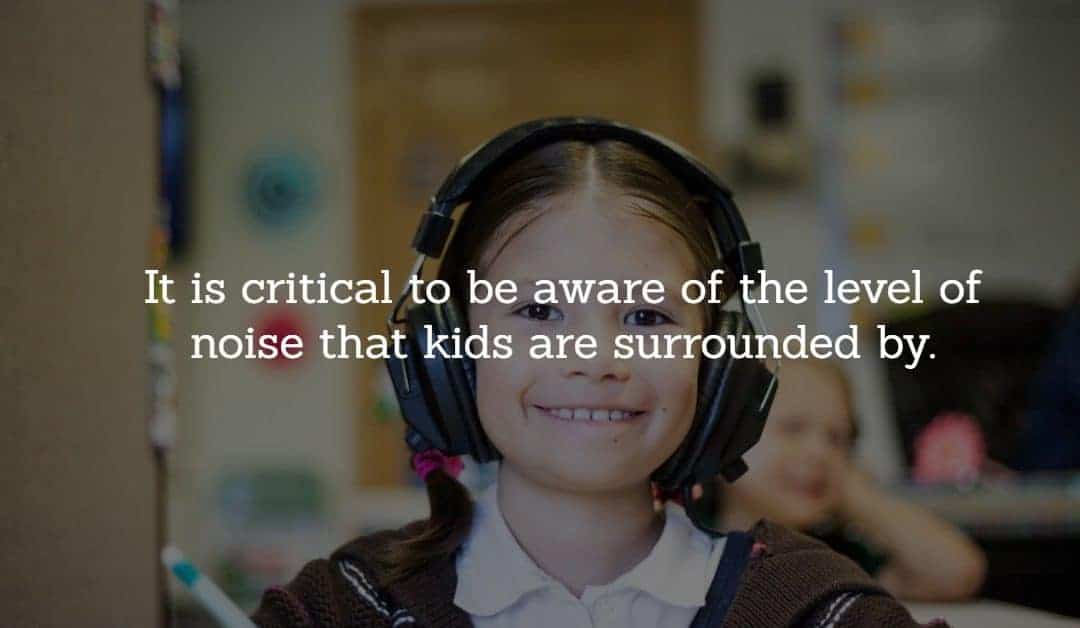Hearing loss is a growing health condition that people of all ages navigate. Impaired hearing has become a public health epidemic and its specific impact on kids is unique. Because children are still developing, hearing loss can affect their ability to effectively cultivate communication, language, and social skills. According to the Centers for Disease Control and Prevention (CDC), nearly 15% of children experience some degree of hearing loss in one or both ears.
There are various factors that cause hearing loss, one being environmental exposure to loud noise. It is critical to be aware of the level of noise that kids are surrounded by and ways that their hearing health can be protected.
How Hearing Works
The way we hear involves a complex system (the auditory system) that requires the complete function of the ears which consist of three main parts:
– Outer Ear: the part of the ear that is most visible as well as the ear canal and ear drum.
– Middle Ear: the eardrum separates the outer and middle ear which consists of three small (among the tiniest in the human body) bones called the ossicles in addition to the eustachian tube.
– Inner Ear: composed of the labyrinth like structure known as the cochlea and nerve pathways.
The outer ear collects sound from the environment. The sound waves travel down the ear canal and strike the eardrum causing a domino effect: the ossicles in the middle ear vibrate which pushes the soundwaves further into the inner ear where the cochlea is activated.
The hair cells and fluid in the cochlea vibrate and move which helps translate the soundwaves into electrical impulses that the auditory nerve sends to the brain. The brain is then able to process and assign meaning to the sounds we hear.
How Loud is Too Loud?
The loudness of sound is measured in decibels (dB). This unit of measurement identifies the intensity of sound waves. The human ear is extremely sensitive and sound above 85 decibels is considered potentially dangerous. To grasp a better understanding of what this sounds like, here are a few helpful markers:
– 0 dB: complete silence
– 60 dB: normal conversation
– 90 dB: lawnmower
– 1110 dB: car horn
– 120 dB: rock concert
– 140 dB: fireworks
Proximity to the source of the sound will of course impact how loud it is. So noise that is close to or greater than the noise of a lawnmower can harm hearing.
Noise Induced Hearing Loss
Consistent exposure to loud noise (85 decibels and higher) can cause noise-induced hearing loss by damaging the inner ear. The louder the sound, the greater the vibration of the hair cells and fluid in the cochlea. These cells and fluid need time to recover from all of this activity but consistently absorbing loud noise prevents any rest.
Over time, this causes the hair cells to lose sensitivity and eventually die. This is irreparable because these hair cells do not regenerate (like other types of cells) meaning, damage is permanent. So the ability of the hair cells to translate soundwaves for the brain to process is reduced resulting in hearing loss. This type of hearing loss is not curable and is most commonly treated by the use of hearing aids.
How to Protect Hearing
Being proactive about a child’s hearing health is so important, especially because they are still developing. Using certain precautions can drastically reduce their risk of hearing loss. Ways to protect hearing include:
1. Wear protective gear: there are several types of protective wear that reduce the amount of sound our ears absorb. A few examples are ear plugs, earmuffs, and headphones.
2. Noise-cancellation headphones: headphones are such a common way kids listen to music, watch shows, audiobooks etc. Noise cancellation headphones significantly reduce background noise so that the volume on the headphones do not have to be constantly turned up but can maintain a normal volume.
3. Take listening breaks: our ears need to rest! So, if kids have been wearing headphones all day or been around lots of noise, it’s important to take breaks.
4. Reduce exposure: by turning down the volume on electronic devices, avoiding places or routes that are extremely noisy etc.

